How to Make Your Own Piping
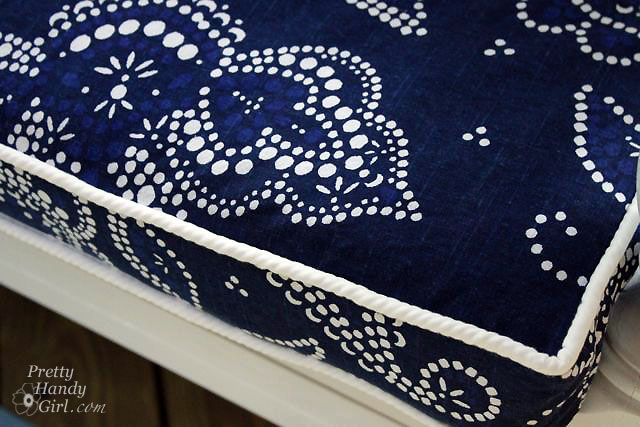
Back when I showed you my screen porch tour, I told you it really wasn’t 100% finished. Why? Well, I really wanted to sew a cushion for the garden bench.
As I was looking for piping for my cushion, I was getting VERY disappointed! Why? Two reasons:
- I couldn’t find a simple piping cord in a white color.
- Anything that might work (off-white) was VERY expensive!
So, I decided to teach myself how to make my own piping for the cushion. I can tell you now, I WILL NEVER BUY PIPING AGAIN! It was that easy.
Materials:
- Cotton rope
- Inexpensive cotton/poly blend white fabric
- White thread
- Scissors
- Pins
- Sewing machine with a zipper foot
- Iron
Tutorial:
1. Start by measuring your fabric and put a snip at 3″.
2. Tear the fabric along the length. The strip should stay approximately 3″ along the rip.
3. To add more length, cut two pieces at a 45˚ angle.
4. Pin the two angled ends together as shown (at a 90˚ angle).
5. Stitch the two pieces together along the angled edge.
6. Open up the fabric and press the seam.
7. Lay your rope in the center of the fabric.
8. Line up the raw edges and pin next to the cord.
9. Using your sewing machine and zipper foot, stitch very close along the edge of the rope but not on top of it.
And this is your finished product! I actually like how the thin fabric shows the spiral pattern of the rope through it.
Now, head on over to my tutorial for sewing the bench cushion cover!


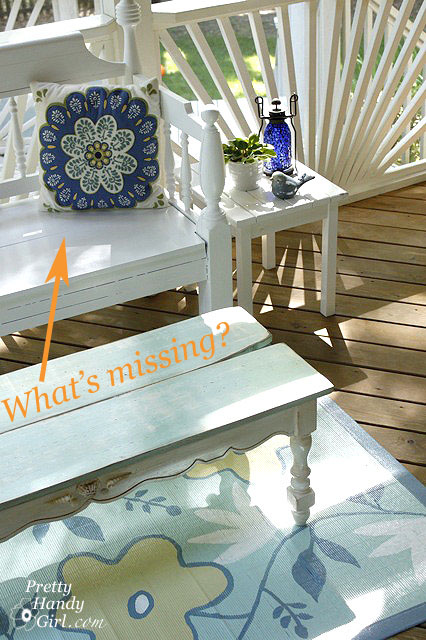
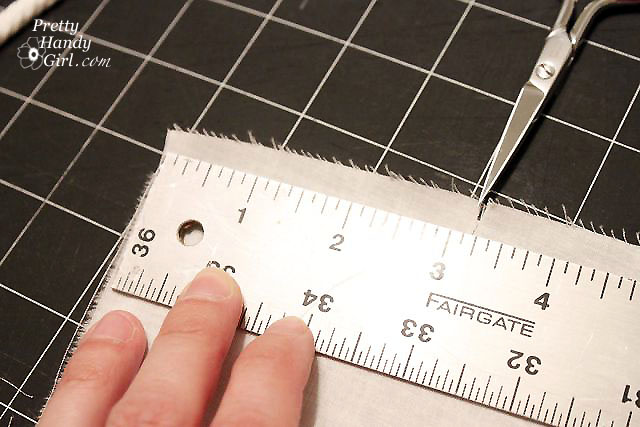
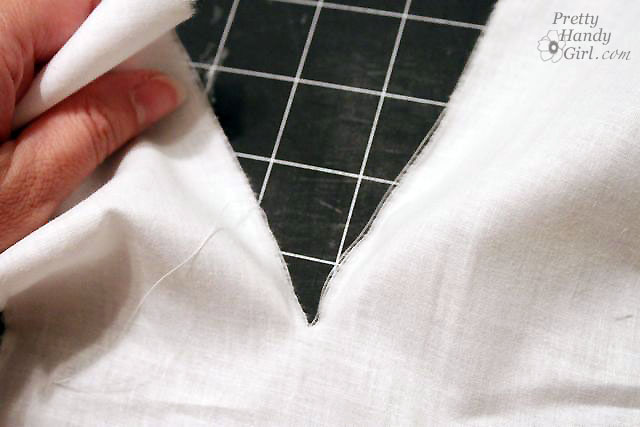
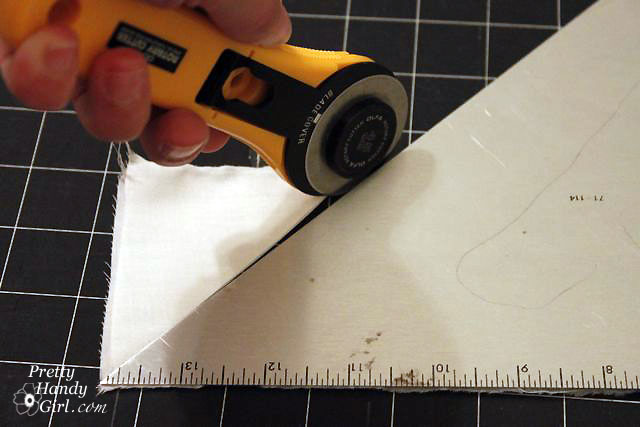

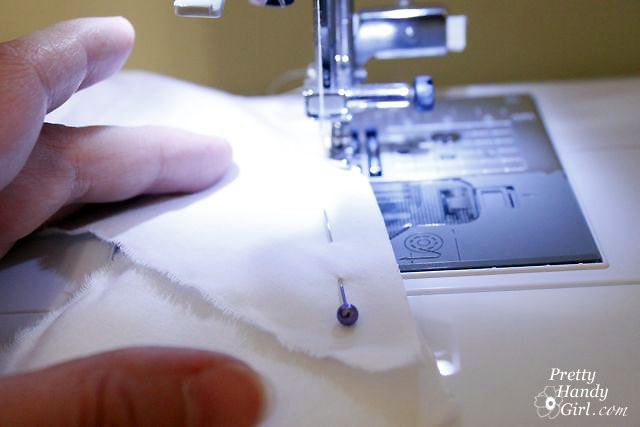



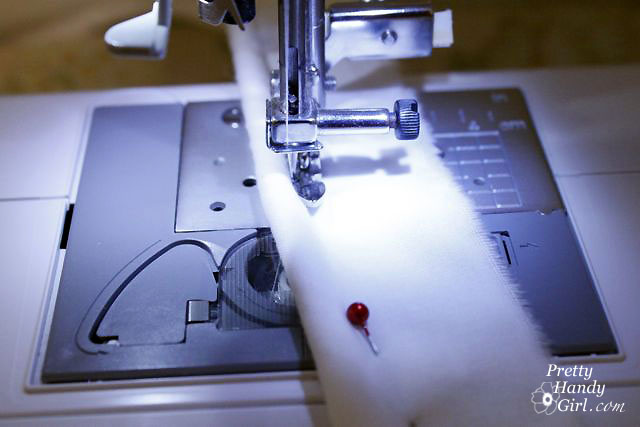
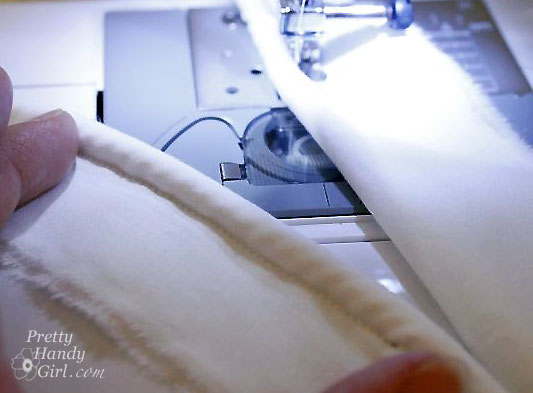
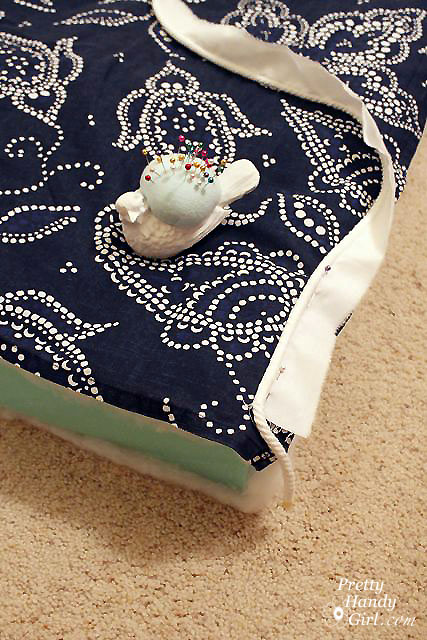
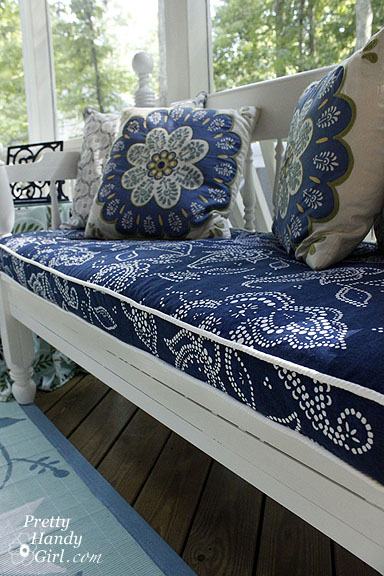


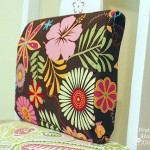
Do you have a problem with mildew and your outdoor cushions. I’ve been afraid to put pillows or cushions outside on my porch in this humid, humid southern weather.
Thank you soo much! I just used your tutorial and made a great (for a novice) cushion cover for an antique bench that was gifted to me.
Great tutorial, easy to read through it. Now in the process of making seat covers. Question: What size cord did you use? Cord #5 is .5 inch and Cord #4 is .38 inch. Thanks
Joy, I’m not sure, but I think it was 3/8″ thick. I’d use what you think looks best for your sized cushion.
This made it all clear for me. Making piping has always been something I tried and never got quiet
right. I think I was attaching the new lengths of material all wrong. Thanks for your great help.